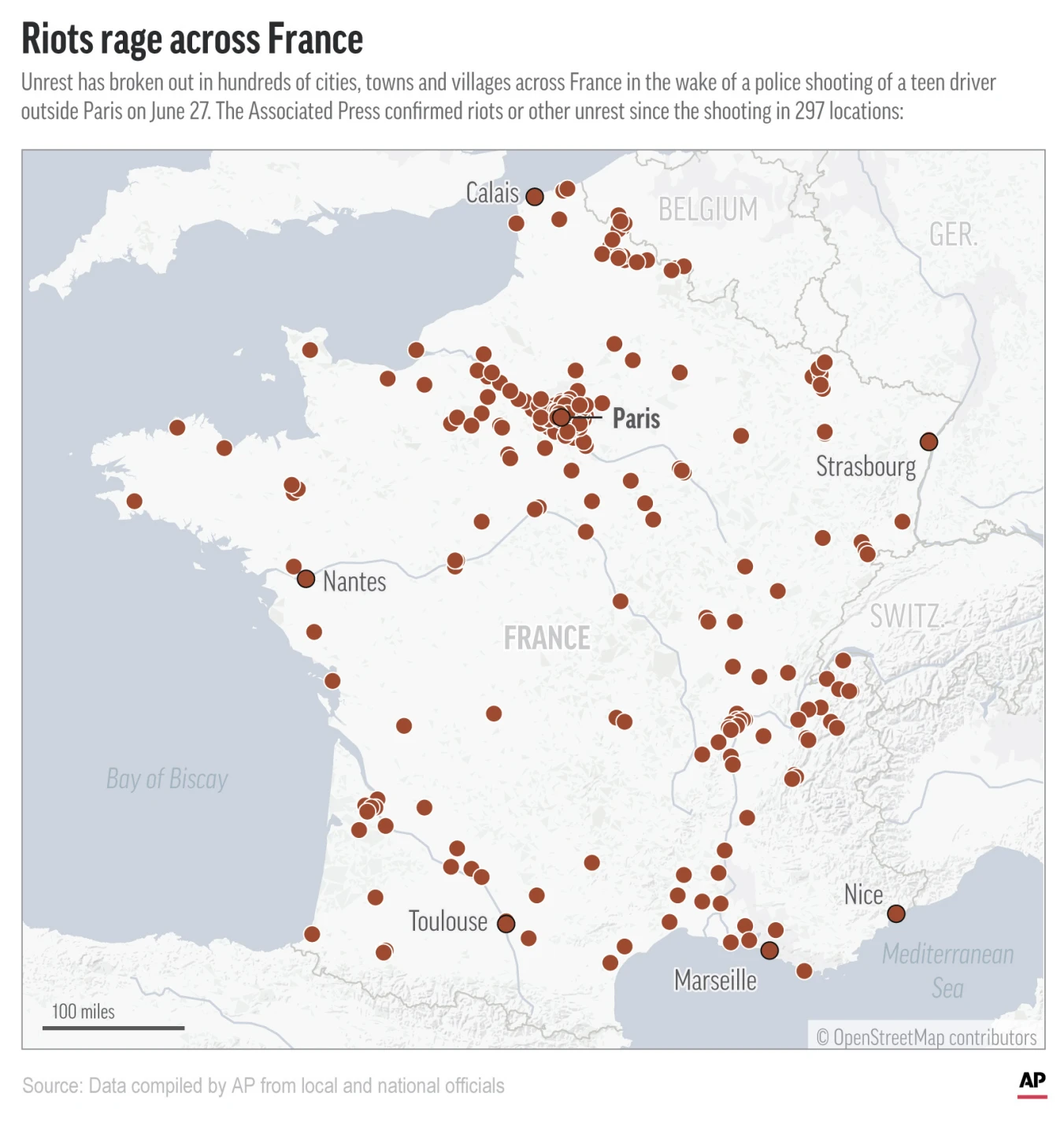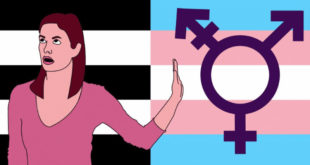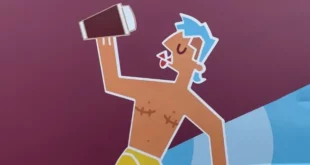This race war is still going, actually.
They arrested a bunch of people in the big cities, and it seemed to be slightly slowing – now it’s blowing up in small towns.
It’s really hard to follow since there is basically a media blackout.
AP:
After a pleasant evening of wine-tasting — joyfully billed “Grapes and Friends!” — with a hundred or so people and oysters, charcuteries and cheeses, the mayor of the picturesque French town of Quissac was on his way home.
Then his phone rang: Urban unrest that was engulfing France after the deadly police shooting of a teenager on Paris’ outskirts, hundreds of kilometers (miles) and a world away to the north, had careened into Quissac’s tranquility, too.
In a quick hit-and-run, a small group of people — seemingly no more than four, the mayor says — bombarded the local gendarmes’ barracks on Quai de la Gare road with powerful fireworks, denting its metal shutters and setting fire to a cypress tree. In the grander scheme of things, it wasn’t much compared to orgies of destruction, arson, looting and rioting unleashed on multitudes of other communities across France in six nights of mayhem. Still, for the town of 3,300 people in the Gard region of southern France, it was a first.
Quissac’s unsettling experience last Friday night — and those of other out-of-the-way towns and villages also hit by unrest to varying degrees — set France’s latest nationwide spasm of rioting apart from previous cycles of violence that have flared periodically in every decade since the 1980s.
Although typically referred to in France as “les violences urbaines” — urban violence — the unrest this time was no longer contained to blue-collar towns and cities’ disadvantaged housing projects, places where anger at social and racial inequalities has festered.
…
Mayors of small towns where vehicles were torched, fires lit and police attacked are scratching their heads, trying to figure out: Why them? Why now? Why are France’s big-city problems, which previously seemed far away, sinking roots into their peace and quiet, too?
“Why these incidents in a little town like ours?” asks the mayor of L’Aigle in Normandy, where fires were lit, cars torched and police chased around after small groups of suspects.
“In the press and even on the TV news, it was mainly Paris and its suburbs, Lyon and Marseille that were talked about. But when you look, there were also incidents in a certain number of small communities,” the mayor, Philippe Van-Hoorne, says. “Unfortunately, the increase of uncivil behavior, of violence, is developing even in modest towns like ours … It’s very hard to solve.”
Pictures from Montargis, a town of around 14,000
By the government’s count, more than 500 cities, towns and villages were affected this time after the police shooting of Nahel Merzouk in the Paris suburb of Nanterre on June 27. The French-born 17-year-old of north African descent was stopped by two officers on motorbikes who subsequently told investigators that he’d been driving dangerously in a bright yellow Mercedes. He died from a single shot through his left arm and chest. One officer is being held on a preliminary charge of voluntary homicide.
From Nanterre, violent protests spread with astounding speed and intensity. They quickly morphed into generalized mayhem that was relayed and celebrated on social networks. Much of the violence was concentrated in cities, large towns and their disadvantaged housing projects, leaving France once again grappling with its decades-old failure to better integrate generations of immigrants and their France-born children who complain of systemic discrimination.
But the staggering nationwide tallies of destruction — more than 6,000 vehicles and 12,400 trash bins set ablaze, more than 1,100 buildings attacked — weren’t limited to previously recognized hotspots. This time, smaller communities were impacted, too.
In Quissac, investigators are searching for 4 people who scattered on foot after the firework attack, says the mayor, Serge Cathala. That incident aside, the only minor troubles Cathala can remember from his 28 years as an elected official are a few “very rare” trash fires and occasional daubs of graffiti. Quissac was spared by the longer nationwide rioting in 2005 that also started in Paris’ outskirts.
“There’s never really been acts of violence like this,” the mayor says. “Now it’s affecting the countryside.”
Like other officials, including French President Emmanuel Macron, he suspects that videos of unrest on social networks encouraged copycat violence.
“It’s one-upmanship,” Cathala says. “A way of showing off.”
The answer to every problem is “more internet censorship.”
It’s weird that this is the solution to every problem.
The Associated Press compiled a list of cities, towns and villages where officials reported unrest. It ended up with 297 names. Every letter of the alphabet was represented with the exceptions of U, X and Z.
They ranged from the commuter town of Achères — on a bend of the River Seine west of Paris that reported fires and destruction that forced the closure its town hall — to Yutz, near France’s eastern borders with Germany and Luxembourg. There, a McDonald’s was torched. Videos of the blaze were shared on social networks, hash-tagged Yutz and riots.
Vibrancy in the town of Corbeil-Essonnes
In Rugles, a Normandy village of 2,200, rockets were fired outside the Intermarché supermarket and fires lit. In Port-Saint-Louis-du-Rhône in the south, where the River Rhône empties into the Mediterranean, a school minibus and about 30 trash bins were set ablaze, the town hall was graffitied and a gas bottle was used to batter the window of a clothing store on Avenue du Port, the mayor’s office says.
Metz, in the east, lost a library to flames. Part of a sports complex earmarked for use as a training venue for the 2024 Paris Olympic Games was set ablaze in Macon, in Burgundy. A social center under construction in Sens, also in Burgundy, was burnt down.
It’s serious business.
No race riot has ever reached anything close to this. It makes the 2020 BLM fiasco look like playtime at the kiddie playhouse.
I do find it impressive how diverse the French team is, however.
It’s really an example to the rest of us.
 Daily Stormer The Most Censored Publication in History
Daily Stormer The Most Censored Publication in History



